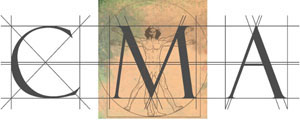Qigong
Qigong (also written chi kung) and pronounced ‘chee kong’) is a form of meditation in movement that is thought to balance the flow of qi or ‘life energy’ around the body. It is used as an aid to healing as well as a preventative measure against disease and illness.
This document provides general information of what to expect when you visit a practitioner, and a general theory behind how the discipline works. It must be noted, however, that every practitioner works in an individual way, and may subscribe to slightly different theories on how the discipline works. It is always advised that you ask to see relevant qualifications and discuss the practice offered to you by the practitioner if you are in any doubt whatsoever.
What is Qigong?
It is practised in China by millions of people on a daily basis and is suitable for all ages and levels of flexibility, and qigong is therefore seen very much as a medicine for the prevention of illness, as well as a therapy for certain ailments and conditions. It involves breathing techniques, meditation, and movement. The emphasis of this discipline is on the need for balance and awareness of the centre of the body. The words ‘qi’ and ‘gong’ loosely translated mean ‘the cultivation and conservation of vital energy’. It is a system in which the body is put through a set of moves, and it is believed that these movements help connect the body, mind, and spirit, thus enabling us to function more effectively. Qigong increases vitality and assists the body to heal itself.
Main uses
Practitioners say that it is not recommended for those who have a history of mental illness. It is, however, very beneficial for stress-related disorders, chronic back pain, frozen shoulders, high blood pressure, stiffness, heart disease, and as a preventative measure against ill health.
What to expect when you visit a practitioner
You will be asked questions relating to your medical history and perhaps that of your immediate family. Lifestyle questions, such as stress levels, diet, exercise regimes, and sleep patterns will be asked to ensure that an holistic approach is taken as well as asking you, the patient, what expectations you have of the treatment.
You will need to wear loose warm clothing and flat flexible shoes (no trainers) as the practitioner will work out a system of movements that you need to practice at home once you have mastered them in the session. You will work your way through a set of exercises building up to more advanced postures as you progress, you may also be taught meditation techniques. The combination of movement, breathing, and meditation will all help to ‘heal’ or transform you by clearing blockages and channelling qi energy to the problem areas. The exercises are said to tonify certain meridians and acupoints on the body thus enhancing the flow and effectiveness of the qi energy.
History (In Brief)
Qigong is based on observations of the cosmos and the movements of wild animals, and, as we know, the Chinese have used the healing power of movement and breathing for millennia. The first qigong clinic established in 1955 was closed during the Cultural Revolution, but qigong is now thriving throughout China and many parts of the world.

